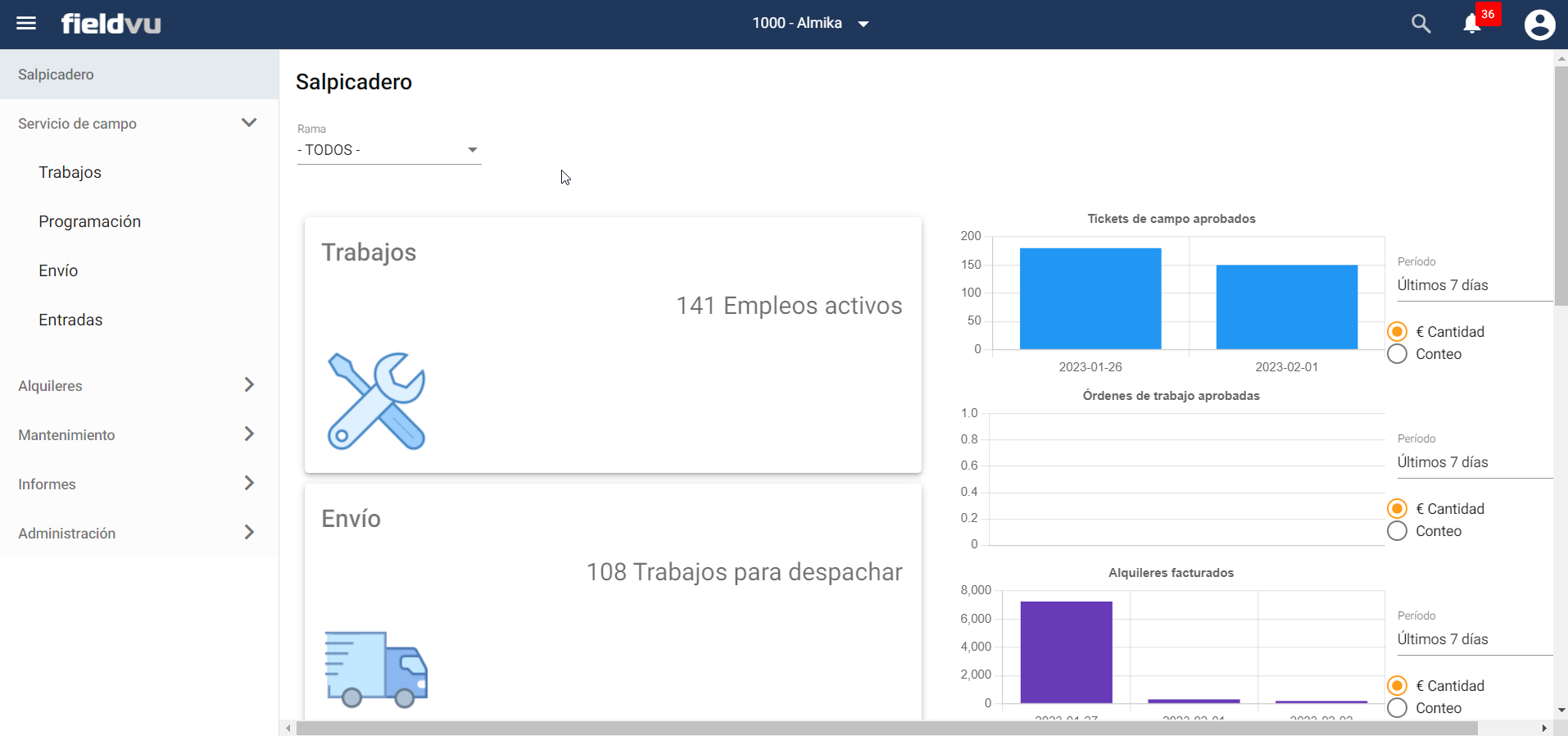
Release FV2302 is a significant milestone for FieldVu. The back-office FieldVu application (typically referred to as FieldVu Cloud), has just undergone an overdue upgrade and modernization so that it is built upon a current web application framework – Angular (version 15)
This release is currently in QA, and is scheduled to be pushed to Production on the evening of February 20th, 2023. The next time you log into https://qa01www.fieldvu.io/ you will find the new interface. If needed, access to the previous version of FieldVu can be found at: https://qa01old.fieldvu.io
Overall, the most visible change for our Users will be a cleaner, more consistent, and modern User Interface (UI) for FieldVu. We have been able to ensure a consistent design approach across the application, and have utilized re-usable components where possible. This will ensure that each screen will look and behave in a similar manner — resulting in what should be a more refined User Experience (UX).
Other than a refreshed UI, the modernized FieldVu will have a number of other significant benefits that may not be seen right away. By using the current version of Angular as our web application framework, we are able to harness all the advances that have been made in web development since FieldVu Cloud was first released in 2016. This will help the continual development of FieldVu progress at a quicker pace than it has in the past, allowing us to release new features and updates sooner.
In addition to the above benefits of a modernized FieldVu, we also took this opportunity to address number of items that have been on the back-burner for a while, but made sense to incorporate during this upgrade. These are outlined below.
As part of being able to give the FieldVu application a full refresh, it became straightforward to add multi-language support throughout the application. Now, through the Profile Settings page (available by clicking on the person icon in the top right corner), the user can select whatever language they want to view the application in.
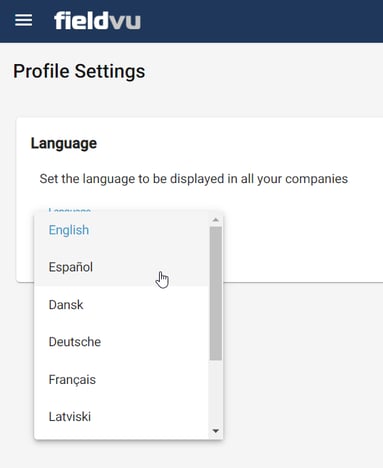
This will then have all text in the application translated to the desired language:
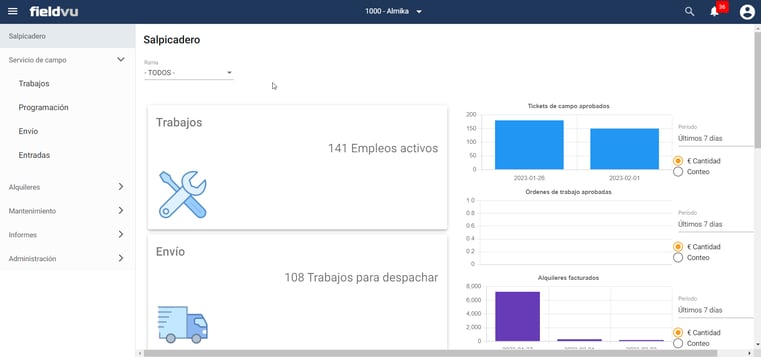
If a language is required that isn’t in the current drop-down list, please let us know and it is simply a matter of adding that to the list – no additional work if required.
The Field Tickets and Work Orders screens have been combined into a single page in an effort to make things clearer for the User, and to reduce the number of steps needed to approve outstanding documents. This combined screen will allow a User to come to a single place where they can review all documents that need to be sent into the ERP, and Approve them all together when ready.
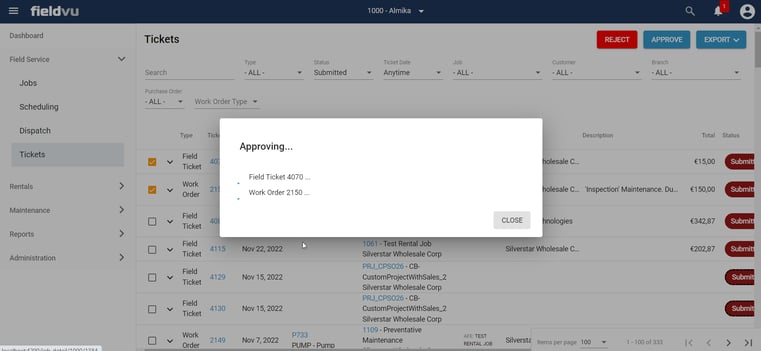
However, if the User wants to focus on only Field Ticket or Work Orders, a drop-down menu will filter the results as desired.
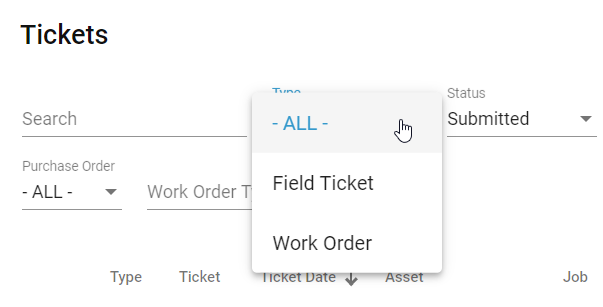
Even though the new Tickets screen combines both Field Tickets and Work Orders, all the of the existing functionality remains, and we have also improved the performance of a number of routine operations (such as expanding on Ticket details).
One of the primary benefits of FieldVu is its ability to allow the User to Schedule Jobs and Resources in as much, or as little, detail as needed. However, in old-FieldVu this typically required visiting different screens depending on what needed to be done.
For the new FieldVu, we’ve addressed the Scheduling concept holistically, and have incorporated recent updates to the Job/Scheduling screen into a common Scheduling component. This new Scheduling component will therefore look and behave the same, no matter where the User is accessing it from. Therefore, whether the User is needing to create new Job Tasks, add Resource Types to a Job, or even assign a specific Resource to a Job – that can be done at the Job level, or the overall Scheduling screen where all Jobs in a date range are shown.
Additionally, the list on the left and right side of the Scheduling component will have sortable and searchable data, allowing the User to customize the information to show only what they need to.
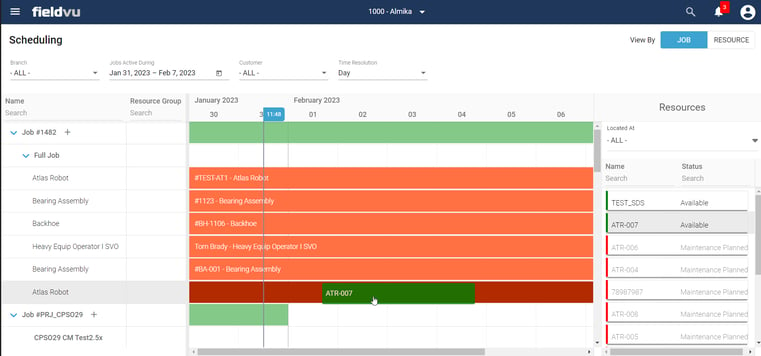
Also in an effort to simplify the Scheduling process within FieldVu, we’ve been able to incorporate the Scheduling of “Hourly” Jobs into the primary Scheduling screen using the Resource view. This way, Hourly Jobs and Multi-day Jobs, can all be Scheduled in the same place, with visibility into the same Resources.
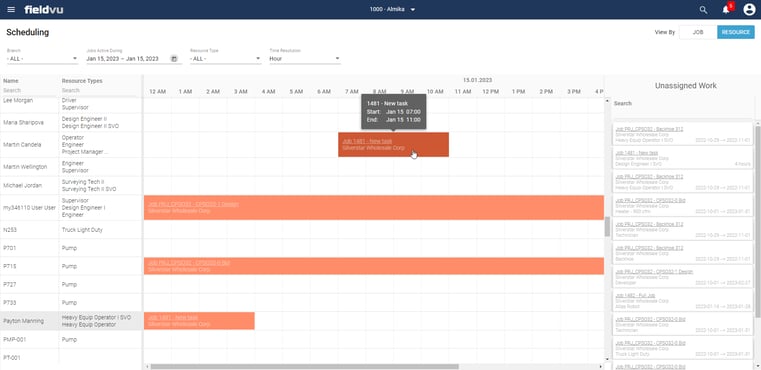
When creating Transfer Orders to move Equipment between Branches, a critical piece of information that has been missing is the current Status of each piece of Equipment. The new Transfer Orders screen now shows the User the current state of each piece of Equipment, so that they can make better decisions on which pieces to Transfer (i.e. not anything Under Repair).
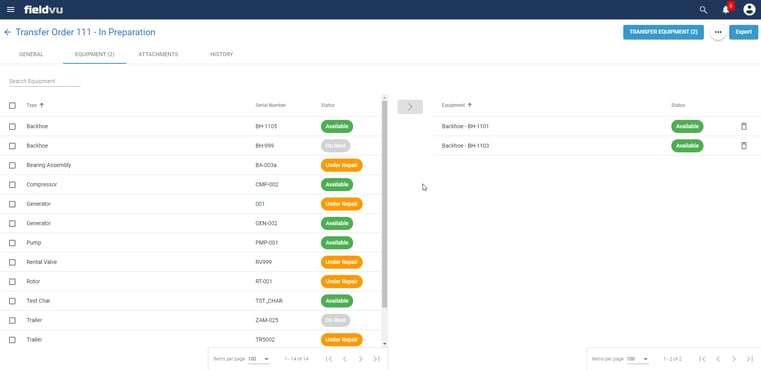
We’ve also added a configuration that, if enabled, will disable the checkbox of any “Under Repair” Equipment, thus preventing it from being selected and added to the Transfer Order. If this is a desired configuration, please let us know and we can enable it for any Tenant.
In the old-FieldVu, when a new User was created there were a couple of unintuitive steps that the Administrator had to take. First, once the User was created, they had to go back into the User to check the box indicating which License type they would have. And second, all Users were automatically created as part of the Admin group, which is counter to the generally accepted concept of “least privilege”. The administrator creating the User would also have to go back into the User details screen to un-assign from the Admin group, and then assign to the appropriate group as needed.
Therefore, in the new-FieldVu we’ve added these two selections directly to the Create User modal — which should simplify the User creation process.
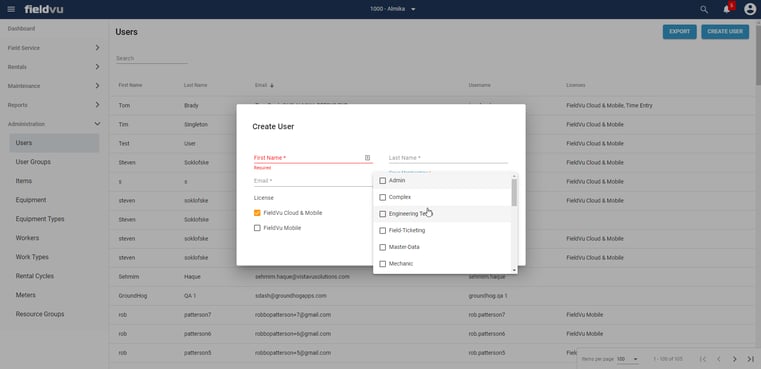
This is more of an under-the-hood change, but is important nonetheless. Currently, FieldVu has been using Auth0 as its User Authorization provider. This has worked relatively well for the most part, but there have been instances outside of FieldVu’s control where Auth0 has been down, and therefore FieldVu has been down as well.
Therefore, in order to reduce the overall downtime of FieldVu, we are consolidating this to use AWS’s Cognito User Authorization service. In addition to decreasing downtime, we also will benefit from having tighter integration between the Authorization service, and all other cloud computing that FieldVu uses which is already within the AWS ecosystem.
This process should be seamless to the User, with no action required on their part. For any new Users, or password resets, you will start to see this being handled in a different manner than before. If any User is experience difficulty logging into FieldVu for any reason, please don’t hesitate to reach out.